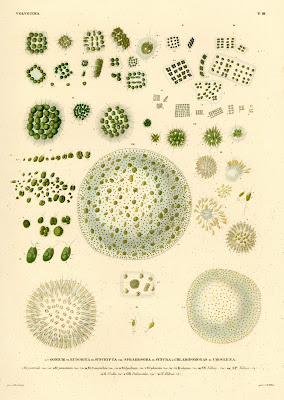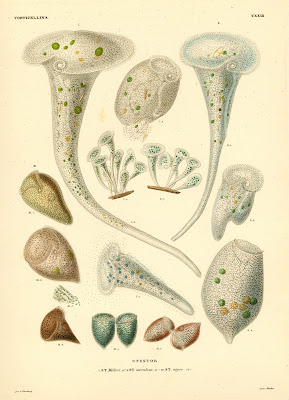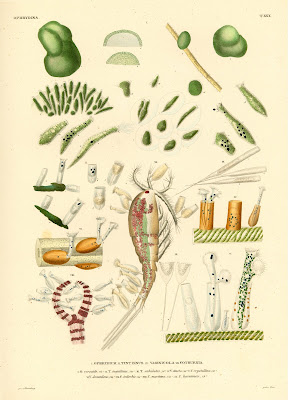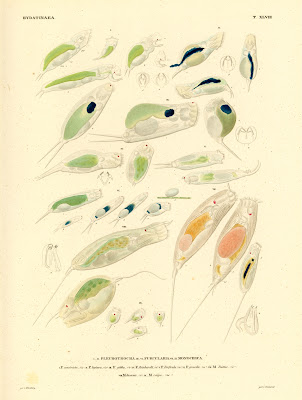
























In the early 1990s the town of Chaumont (S.E. of Paris) decided to use the dormant agricultural silos of the Haute-Marne region of France as a shelter for old books and posters from a former library. In 1994 La maison du Livre et de l’Affiche (The House of the Book and the Poster) opened its doors.
The core of their collection consists of some 5000 Fin de Siècle posters which were assembled by the town Mayor in the late 19th century. The Silo is considered an international centre with respect to theatre, dance and opera graphic arts.
3000 of these posters are available online via la médiathèque site of the Silo ('affiches anciennes'). It is a 'servlet' arrangement so it will time out if you don't keep looking around and you can't open multiple tabs/windows. I found clicking on the titles beneath the image and then the 'TIF' image link at the bottom of the subsequent page the easiest way to get to the larger versions (which do open in a new tab/window).
Note there are metadata categories once you click through - meaning you can look at just circus or just theatre or eccentric etc posters. I've only seen the first 1000 posters and of those there were perhaps 3 that I was sure I had seen previously. I think the above selection is a fair representation - a lot of circus and theatre, with regular eccentric pictures, occasional sketches and rarely, there are things like art book images. Overall this is a fantastic site but many of the works are quite dark so all of the images above were tweaked at least a little bit. Click for full size versions and mouseover for titles.
Saturday, March 03, 2007
The Poster Silo
Thursday, March 01, 2007
Dictionary Iconography










The first 7 ornamental lettrines (I continue to support our co-opting of this french word) are by Napoléon Landais from either his 'Dictionnaire Général et Grammatical des Dictionnaires Français' (1834) or his 'Petit Dictionnaire Français Portatif' (1840).
The last 3 lettrines are from 'Le Grand Dictionnaire Universel' (1865) by Pierre Larousse.
The Université Pierre-Mendès-France in Grenoble have a database called 'Art Dico' in which the iconographical elements of 19th century french dictionaries are collected.
ADDIT Oct. 2012: the above link is dead and it appears the site has been moved to here: **Art Dico - illustrations ornamentales des dictionnaires**.
Actually, we are told that the images above are not really lettrines (illuminated letters); rather they are called iconophors - something of a neologism to describe an iconic letter together with surrounding pictures that start with that letter (apple = 'A' etc). There is a fair bit of english available and it's interesting to browse around - mouseover the website images to discover the name of each related picture. It's all easy. For instance, in one of the letter 'G' images above, you can see Gulliver and Galileo if you look hard enough. Some are more esoteric/french/difficult than others. To date they have 64 Dictionaries, 363 Ornaments and 1048 Items uploaded.
"In the fifteenth century, the inception of printing changed the way text was reproduced and transmitted. The old ornamentation, however, remained, though its original function as a means of glorifying the sacred word was progressively disappearing. Late in the seventeenth century, a few French dictionaries began offering ornamentation embodying a particular encounter of letter and image: the initial-letter introducing the A section, combined the letter A and an illustration of some entity whose name starts with A. This was congruent with the old principle of giving the reader a glimpse, on the threshold, of what is to come."
Wednesday, February 28, 2007
Botanical Illustrations by Georg Ehret











After studying horticulture in his native Germany, Georg Dionys Ehret (1708-1770) moved to Holland where he pursued botanical illustration. In a suitable testament to his distinguished talents, the great Carl Linneaus was among the first supporters of Ehret, with whom he collaborated on a book recording the contents of the renowned Georg Clifford estate ('Hortus Cliffortianus', 1838).
Ehret spent the second half of his life in England and was to become one of the most respected and influential botanical artists of the 18th century. He had already become known to the physician and passionate botanist, Chrisoph Trew, who acted as patron and publisher to Ehret for decades. Their collaboration produced one of the finest botanical works of the century in 'Plantae Selectae', which was published over about 20 years until 1769.
Linneaus wrote to Trew:
"The miracles of our century in the natural sciences are your work of Ehret's plants. Nothing to equal them was seen in the past or will be in the future."The images above come from a small and very rare self-published series that Ehret engraved and personally coloured, the 18 illustrations being issued between 1748 and 1759. 'Plantae et Papiliones Rariores' is online at the University of Strasbourg and they have huge images available.
- The University of Maryland have a review of this series and discussion about both Ehret and Linnaeus by James L Reveal.
- Georg Ehret at Wikipedia.
Monday, February 26, 2007
The Infinitesmal II


















The images above and in the previous post come from the 1838 book by Christian Gottfried Ehrenberg called 'Die Infusionsthierchen als Vollkomene Organismen'.
There is also another, earlier post - Microgeology - which has more of an outline about the extraordinary contributions to microbiology and paleontology made by Ehrenberg.
The Humboldt University Museum für Naturkunde have high resolution images from a number of works by Ehrenberg and they are all enormous. By way of justification to myself for blind downloading, I've added the image below which started out at a cool 65Mb (ouch!), from a work entitled 'Symbolae Physicae'.
The first image above is something of a mashup. Click everything for much larger versions.
Update: I nearly forgot. Following on from past centenary post precedents, I extend an open invitation to anyone who has links to book/print/graphic material -- particularly from the less represented areas of the world, but really, from anywhere/anytime -- that is in keeping with the style of this site, to make contact either by mail {peacay ATT gmail.com} or by adding a comment with a recommendation. I do look at everything. And no, the cupboard is not empty.
To those who have slipped links and pictures to me previously by way of email and delicious, if I haven't posted the material, there may be several reasons --- I haven't figured out how I might use it yet, the images are a bit small, there is a post somewhere here in the archives that covers it already, or it didn't grab me when I saw it the first time. I am nothing if not capricious. But I am grateful for any and all tips, pointers, website critiques, recommendations, life advice, date offers, dress criticism, recipes and the related somesuch. No need to be shy.









































